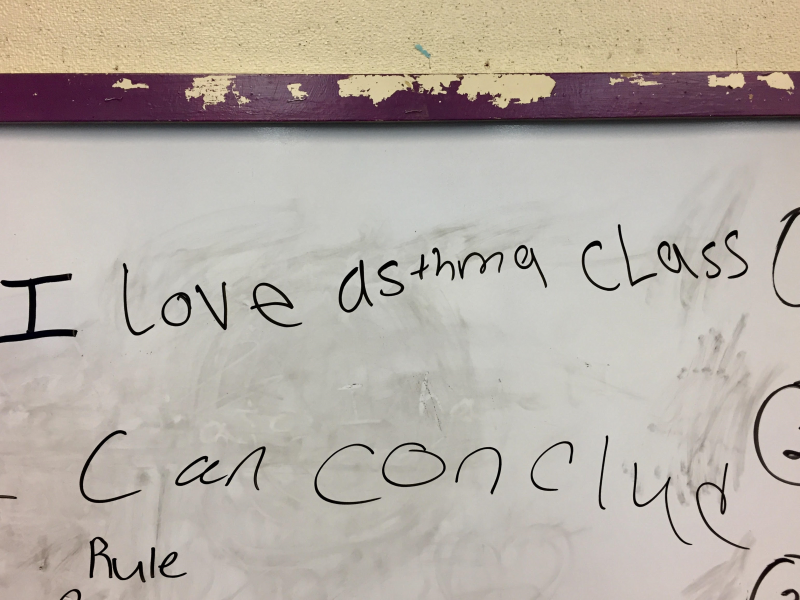Asthma 101
Game seven of the World Series. The 26th mile of a marathon. The last exam of med school. The final round of asthma Jeopardy where a room full of sixth graders are scrambling to correctly spell the word for the air sacs in the lungs. In all of these situations, passions are strong and the stakes have never been higher. As I veto'avoli" and then'alveiols," the intensity heightens, until Team Goat finally is victorious with'alveoli."
 As an Asthma Educator with Respiratory Health Association, this extreme scenario (or sometimes multiple, as we travel to up to four schools a day) is just a day in the life. The three-day, one-hour program that we offer to students with asthma in grades 3-12 includes worksheets, word searches, participation, and, of course, Jeopardy. The major topics consist of what asthma is, what happens in the body (hence alveoli), identifying warning signs, the different kinds of medicine and techniques, understanding asthma triggers, and how to handle asthma in school. Students also receive a free workbook and spacer, which is used to make an inhaler work more effectively.
As an Asthma Educator with Respiratory Health Association, this extreme scenario (or sometimes multiple, as we travel to up to four schools a day) is just a day in the life. The three-day, one-hour program that we offer to students with asthma in grades 3-12 includes worksheets, word searches, participation, and, of course, Jeopardy. The major topics consist of what asthma is, what happens in the body (hence alveoli), identifying warning signs, the different kinds of medicine and techniques, understanding asthma triggers, and how to handle asthma in school. Students also receive a free workbook and spacer, which is used to make an inhaler work more effectively.
The audience of our student program varies widely. Some schools host our program every year, so most students have no problem rattling off the'three S's of asthma" (snot, swelling, and squeezing) on day one. The challenge in these schools is often that the students feel as though they already know all of the information, so it becomes a matter of adding new facts or finding different ways to present it. One game that has proven to be popular even among the most jaded of 8th graders is charades with warning signs and triggers, in which I'll tell a student to act out something like'dizziness" or'exercise" and let the class guess.
In other schools, we are covering completely new material, sometimes in a room without desks with 30 students who are missing their recess. This can obviously make for a chaotic environment. Further, asthma is chronic, but is commonly misconstrued as a disease that goes away. Thus, many students who are in the system as having asthma, but have not had an attack in years, feel as though the information is not relevant to them. These schools present a different set of challenges, and one strategy I have used has been creating more discussion so students can participate more actively and think about how the material relates to their lives.
While the position can be challenging, it is extremely rewarding when a student gets every question correct on their post-survey, or tells you how they took their inhaler with their new spacer the day before. Throughout the year, I hope to continue to innovate and tweak every class in hopes of helping each student to manage their disease more effectively.
This blog post was written by NHC Chicago 2016-17 member Laura Milstein.
Laura is an Asthma Educator at Respiratory Health Association.